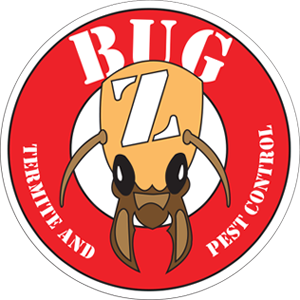Odorous Ants
Odorous ants get their name from the smell of rotten coconuts they give off when crushed.
What do Odorous Ants look like?
Odorous house ants are relatively small, typically measuring between 1/16 to 1/8 inches (1.5 to 3.2 mm) in length. They have a smooth, uniform body shape and are usually dark brown to black in color. One of the distinctive features of these ants, which can help in identifying them, is the absence of a raised thorax, a characteristic found in many other ant species. Instead, their thorax is evenly rounded when viewed from the side. Additionally, they have an unevenly shaped abdomen with a hidden or very small stinger that is not used. Their antennae are bent or "elbowed." These physical characteristics, combined with their peculiar rotten coconut smell when crushed, make them identifiable from other common household ants.
Nuisance or danger?
Odorous ants, known for the distinctive rotten coconut-like smell they emit when crushed, are more often considered a nuisance than a danger. These ants, typically small and dark brown or black, are commonly found in homes searching for food and water. Here's a breakdown of their impact:
Nuisance Factors:
1.Persistent Invaders: Once odorous ants find a reliable food source inside a home, they can be difficult to eliminate. They establish well-protected nests in a variety of indoor and outdoor locations.
2.Large Colonies: Their colonies can grow quite large, and because they are not aggressive towards other odorous ant colonies, multiple nests can coexist in proximity, leading to large infestations.
3.Food Contamination: Like many pests, they can contaminate food sources they infest, leading to food waste.
4.Lack of Aggression: Odorous ants are not aggressive. They do not sting or bite unless their nest is disturbed, and even then, they are not known to cause harm.
5.No Structural Damage: Unlike carpenter ants or termites, odorous ants do not cause structural damage to buildings, as they do not eat wood.
Health Risks:
1.Limited Health Risk: They are not known to carry diseases, but as with any pest that encounters food surfaces, there's a slight chance they could spread bacteria from one place to another.
How do I know if I have Odorous Ants?
Identifying odorous ants involves a few key characteristics and behaviors unique to them. Here's how you can determine if the ants in your home are indeed Odorous Ants:
Behavioral Characteristics
1.Foraging Patterns: These ants are known for their long, meandering trails as they search for food. They are particularly attracted to sweet substances and can also feed on other insects.
2. Nesting Sites: Odorous ants nest in a wide variety of locations. Indoors, they might nest in wall voids, around hot water pipes or heaters, and beneath leaky fixtures. Outdoors, they can be found in exposed soil or under stacks of firewood, rocks, and boards.
3.Activity: They are most active at night when they forage for food. However, if you see ants consistently during the day, especially trailing to food sources, it's a strong indicator of an infestation.
Infestation Signs
1. Trails: One of the most obvious signs of an odorous ant infestation is the presence of trails of ants moving to and from their nest to food sources.
2. Multiple Sightings: Seeing large numbers of ants in your kitchen, bathroom, or other areas where food or moisture is present is a common sign.
3. Nest Location: Finding the nest can be difficult because odorous ants can create nests in a variety of hidden locations. However, seeing ants entering and exiting a particular area might indicate the nest's location.
Why do I have Odorous Ants?
Odorous ants are attracted to environments that offer easy access to food, water, and shelter, which are the primary reasons they might choose to invade a home or building. Here are some factors that could lead to an odorous ant infestation:
1. Food Sources
- Sweet Foods: They are particularly attracted to sweet substances. Leftover food, sugary spills, and unsealed food containers can draw odorous ants indoors.
- Protein and Grease: Although they prefer sweets, odorous ants will also eat foods high in protein and grease, including pet food.
2. Moisture
Odorous ants are drawn to areas with excess moisture. Leaky pipes, areas with poor drainage, and even pet water bowls can attract them.
3. Warmth and Shelter
During colder months, the warmth of a home can attract these ants. They often nest in warm areas around heaters, hot water pipes, and under appliances.
4. Easy Access
Cracks in the foundation, unsealed windows and doors, and other small openings offer easy access for odorous ants to enter a home.
5. Existing Colonies Nearby
If there are established odorous ant colonies near your home, it increases the likelihood of an infestation. These ants can travel significant distances while foraging, leading them to discover openings into your home.
6. Landscaping and Outdoor Factors
Heavy mulch, dense vegetation, and objects lying directly on the ground near the structure can provide nesting sites for odorous ants and pathways into the building.
7. Indoor Potted Plants
Overwatered plants or those in damp soil can also attract odorous ants, providing both a water source and a potential nesting site.
What should I do if I have Odorous Ants?
If you find yourself dealing with an odorous ant infestation, there are several steps you can take to eliminate them and prevent their return. Here’s a comprehensive approach:
1. Identify and Eliminate Food Sources
- Store food in airtight containers, especially sweets, pet food, and other items that might attract ants.
- Clean up spills and crumbs immediately, paying special attention to dining and kitchen areas.
- Regularly take out the trash and use bins with tight-fitting lids.
2. Eliminate Water Sources
- Repair leaky pipes and faucets to eliminate moisture sources that attract ants.
- Ensure that areas around the home, such as gutters and downspouts, are draining properly away from the foundation.
3. Seal Entry Points
- Seal cracks and crevices in doors, windows, and foundations to prevent ants from entering the home.
- Install door sweeps on exterior doors and repair damaged screens on windows and doors.
4. Remove Ant Trails and Nests
- Clean ant trails with a mixture of vinegar and water (50/50) to erase the scent trails ants leave for others to follow.
5. Maintain Yard and Exterior
- Trim trees and shrubs away from the house to eliminate bridges for ants to enter.
- Remove any potential nesting sites near the home, such as piles of bricks, wood, or debris.
6. Contact BugZ Termite and Pest Control
- If the infestation is large or difficult to manage, consider calling our BugZ team. They can offer a more comprehensive approach to identify the nest, use treatments, and provide long-term prevention strategies.
Preventative measures are key to keeping odorous ants and other pests at bay. Regularly inspect your home for signs of ants, maintain cleanliness, and swiftly address any moisture or entry points to avoid future invasions.
WHAT TREATMENT IS EFFECTIVE AND HOW DO I PREPARE FOR IT?
NEVER use an over-the-counter insecticide for ant infestations. These readily available chemicals kill on contact, giving you the false sense that you’ve killed them all! In fact, you’ve now caused the queen to go into “overdrive”, reproducing her missing colony members at a much more rapid pace. Ant treatment involves treating the nest and baiting near scent trails, essentially transferring chemicals back to the queen. Once she’s dead, the colony dies soon after. Contact BugZ at the first sign of any ant in the house or elsewhere on the property!
Effective treatment for odorous ants involves a combination of sanitation, mechanical barriers, and chemical control methods. Preparation and execution are key to successfully eliminating these pests. Here’s a guide to help you get started:
1. Sanitation and Habitat Modification
- Clean up: Regularly wipe down surfaces to remove food residues and spills. Vacuum or sweep floors to get rid of crumbs.
- Store food properly: Use airtight containers for food storage, especially for sweets and pet food.
- Eliminate water sources: Fix leaky faucets, pipes, and any other areas with excess moisture.
2. Physical Barriers and Repairs
- Seal entry points: Use caulk to seal cracks and crevices in the foundation, walls, around windows and doors, and any other entry points
- Trim vegetation: Keep branches and shrubbery trimmed away from your home to remove pathways for ants to enter.
3. Contact us at BugZ Termite and Pest Control
Contact Us: Give our team a call and we can help identify and treat the problem in your home.
Preparation for Treatment:
1. Identification: Confirm that you're dealing with odorous ants.
2. Inspection: Locate as many nests or trails as possible. Knowing where the ants are coming from can help our pest team target where they need to treat.
3. Sanitation: Clean your home thoroughly to remove any attractants before BugZ comes out to apply any treatments. This includes removing garbage, cleaning up spills, and ensuring food is securely stored.
4. Access: Make sure that all areas where treatment will be applied are easily accessible. This may involve moving furniture, appliances, or stored items.


